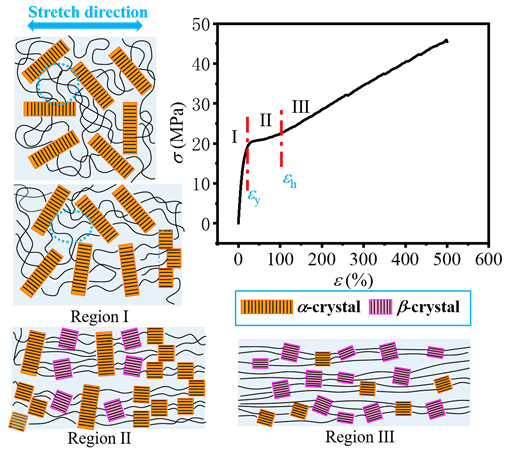Recently, the structural evolution of a new biodegradable film during stretching at room temperature was systematically studied by the simultaneous radiation X-ray small angle scattering and wide angle diffraction technique (SAXS/WAXS). Related research work was recently published in the journal CrystEngComm.
This work combines the tensile device developed by the laboratory with the synchronous radiation X-ray technology to systematically study the structural evolution of poly(adipic acid)/butylene terephthalate (PBAT) during the stretching process. According to the stress yielding and strain hardening on the mechanical curve, the whole process can be divided into three regions, each of which exhibits different structural changes. The amorphous molecular chain in zone I is affine-deformed; the amorphous molecular chain in zone II extends to form a metastable beta crystal; the original alpha crystal in zone III is converted into the beta crystal by a solid-solid phase transition. At the same time, the transmittance of PBAT also changed significantly due to the conversion of alpha crystal to beta crystal during stretching. These conclusions provide theoretical guidance for the preparation of agricultural films with higher transmittance. The above research work was supported by the National Key Research and Development Plan of China (2016YFB0302500) and the National Natural Science Foundation of China (51633009, 51703217).

Related links:https://pubs.rsc.org/en/content/articlehtml/2018/ce/c8ce01734d


